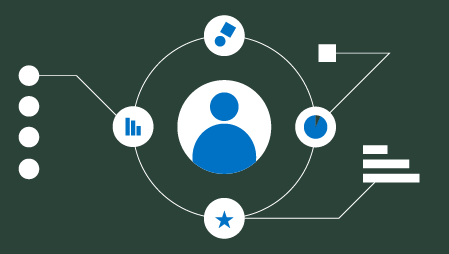Ready to learn Big Data? Browse Big Data Training and Certification Courses developed by industry thought leaders and Experfy in Harvard Innovation Lab.
Your employee productivity is a major factor in your company’s success and ability to grow. People need to be happy and motivated to be productive—it’s as simple as that.
Unfortunately, employee engagement in the United States and worldwide has been less than stellar for years. The numbers have actually been getting worse—in 2015, under a third of American workers were engaged with their jobs. That’s the lowest rate since 2000. Employees need to feel valued and recognized if they’re going to do their best work. When they are feeling inspired, they’re capable of truly amazing things. High levels of engagement can result in 22% more productivity, helping companies to grow more quickly.
Improving your employee engagement can pay off big time. But if engagement is so low, how can you beat the odds? It’s up to management and senior leadership to advance internal operations and create a positive environment where employees thrive. Here’s how big data can help.
Big Data Gives Us Insights
Many employees are disengaged because they don’t feel like the work they’re doing is important or they can’t see any growth for themselves in the future. Others simply don’t feel valued. Big data can give you the hard numbers to help your employees succeed and feel more motivated.
Lack of information is often part of the cause of poor performance. In some departments especially (such as sales), numbers have always been used to measure performance. Salespeople are often pitted against one another, in theory, promoting productivity. However, without the complete picture of what each employee is doing, it’s hard to get an accurate picture of how each person is performing, and what their strengths are.
For example, if one person is making five sales a day while his peers make four, that my sound impressive. When you have more information, however, you might find that the person making five sales is spending 2-3 hours longer in the office. Is that better performance and productivity? Having the complete data gives you insights you can use to motivate the team.
How Data Can Help Employees Excel
Big data gives us a more holistic view of employee performance and productivity. By analyzing employee data, you can approach engagement like you would when building a customer profile. Really dig in. Can you identify their strengths and preferences from their performance data?
Strategize on how to measure success, and be sure to reward and recognize employees for their efforts, not solely on results. Be willing to assess problem areas, communicate, and work with employees so they are inspired to be productive and be a part of the team for a long time to come.
Rethinking the Review with New Data Tools
In the past, big data was cost-prohibitive and complicated to implement. Only large companies were able to trailblaze this new technology and succeed—UPS, one of the first serious big data adoptors, spends $1 billion annually on technology, for example.
All that’s changing, though. Technology is getting cheaper, and it’s easier than ever to collect performance data from different sources, like CRMs, phone records, and emails. This information can be used to help create individual support plans for employees and more constructive reviews.
Increasing Engagement Helps Keep Employees Safe at Work
Investments in big data and employee engagement can seem costly, but they can pay off in the end by keeping employees happy and satisfied at work. Not only can these initiatives improve productivity and reduce turnover, but they can also prevent more serious issues like workplace hostility and violence from occurring.
It may seem extreme to think that workplace violence could occur in your office, but it happens all the time—between 2005 and 2009, five violent crimes took place for every thousand workers. Employees are more likely to commit acts of violence when they feel stressed or don’t enjoy their work environment.
It’s Management’s Responsibility to Take Care of Employees
Big data may be a good tool in helping increase employees productivity, but it’s the managers that wield those tools who have the biggest impact. It takes a gifted leader to truly listen and appreciate people. Balancing the needs of the business with the needs of the individual is always challenging.
Leaders need to be willing to adopt a different standard and tone in how they communicate. Data can be used to tear people down who aren’t performing, or it can be used to empower and improve performance. Management needs to take care of employees and create a positive environment by using data for good.




